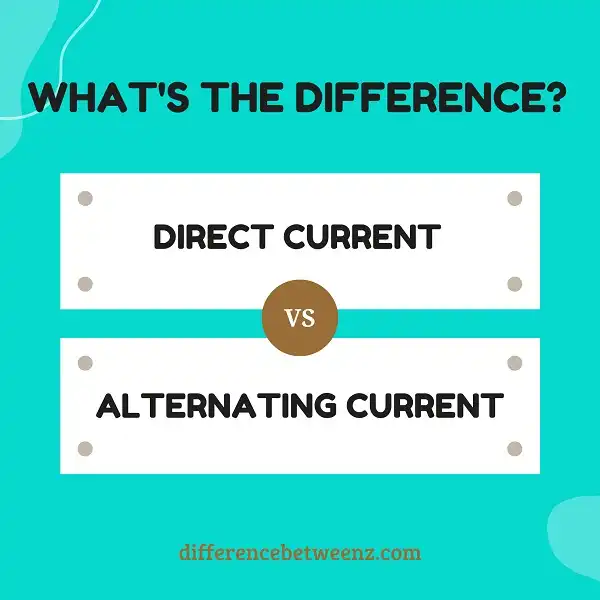When it comes to electrical currents, there are two main types: direct current (DC) and alternating current (AC). Both of these types of currents have their own unique benefits and drawbacks, which is why they are used in different situations. In this blog post, we will take a closer look at the differences between DC and AC currents. We will also discuss when each type of current is most appropriate.
What is Direct Current?
A direct current (DC) is an electric current that flows in only one direction. DC can be generated by chemical reactions, solar panels, or wind turbines, among other things. The most common form of DC is the flow of electrons from a negative to a positive terminal in a circuit. This flow creates a potential difference, or voltage, across the terminals. The amount of current that flows in a DC circuit is determined by the voltage and the resistance of the circuit. Direct current is used in a variety of applications, including batteries, computers, and motors.
What is Alternating Current?
- An alternating current (AC) is an electric current where the direction of the flow of electrons reverses periodically. The cycle frequency is the number of times per second that this occurs and is measured in hertz (Hz). In a direct current (DC), the electrons flow in one direction only. The key difference between AC and DC is that Alternating Current changes direction while Direct Current does not.
- In an Alternating Current, there are two general types of waveforms used. The first and most common form is a sine wave. The second form is a square wave. The fundamental building block of Alternating Current is the sine wave. It contains no harmonics or multiples of the fundamental frequency. All other waveforms can be produced by adding together sine waves with different frequencies, amplitudes, and phases.
- The concept of Alternating Current was first proposed by Michael Faraday in 1831. It wasn’t until 1886 when Nikola Tesla invented the first AC motor that Alternating Current gained popularity as it was able to transmit electricity much more efficiently over long distances than Direct Current at the time.
Difference between Direct Current and Alternating Current
Direct current (DC) is an electric current consisting of electrons flowing in one direction only. Direct current is produced by batteries, fuel cells, and solar panels. An alternating current (AC) is an electric current consisting of electrons flowing first in one direction, then in the opposite direction. Alternating current is produced by generators, dynamos, and alternators.
The main difference between direct and alternating current is the direction in which the electrons flow. In direct current, the electrons flow in one direction only, while in alternating current, they alternate between flowing in one direction and then the other. Direct current is used for charging batteries and powering most electronic devices, while alternating current is used for powering motors and lighting.
Conclusion
In conclusion, both direct current and alternating current have their own unique benefits and drawbacks. Understanding the difference between them is important for anyone looking to use electricity in their home or business.


